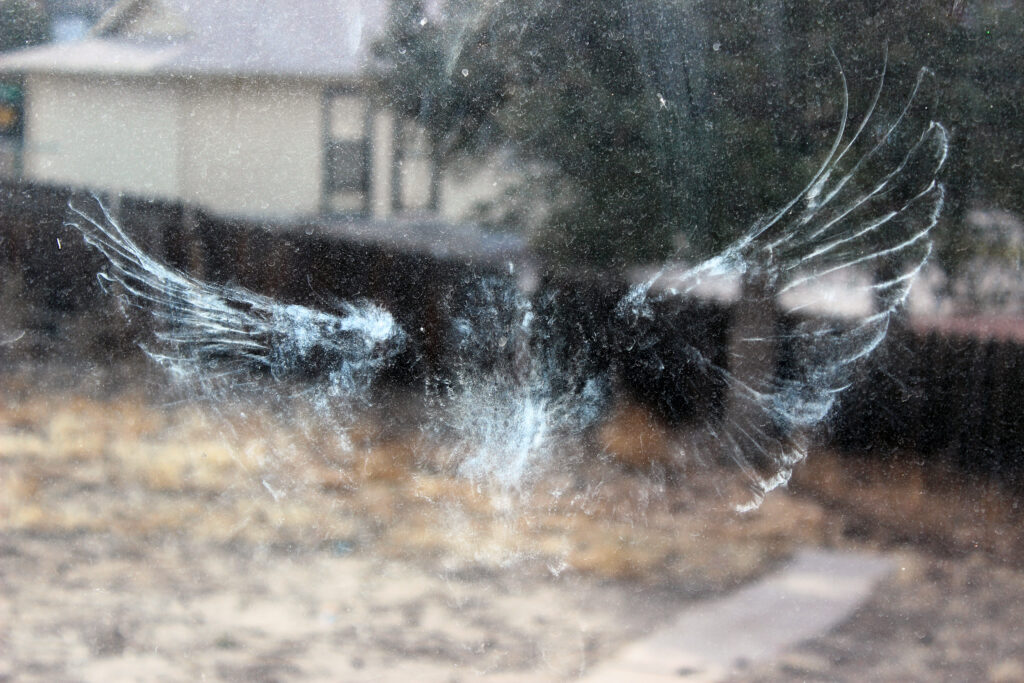Window collisions are the second-highest direct human cause of bird deaths in Canada (about 25 million annually) according to a published Environment Canada scientific paper. Ninety percent of these collisions are with windows in individual houses, about nine per cent from low-rise buildings, and less than one per cent from high rises and skyscrapers. The problem only gets worse for the 8 of every 10 of our birds that migrate south of Canada’s borders each fall. In the United States, there is much more glass and buildings. Estimates of window casualties of birds in the United States are between 100 million and one billion birds annually.
This is an issue for homeowners, building owners and building tenants. Everyone has a role to play in reducing collision risk. Making windows visible to birds is the best solution. Other solutions include mitigating factors that attract birds or put them at higher risk, such as escaped artificial light from windows, and for home owners, placing features that attract birds such as bird feeders a safe distance from the windows. FLAP Canada and American Bird Conservancy (ABC) have excellent resources to help save birds from window collisions.
A recent court ruling in Ontario determined that commercial buildings that emit light that results in killing birds are in violation of the law. This important ruling determined that owners of buildings that kill birds must mitigate the harm caused to birds. Does your building kill birds? Now is the time to act and start saving bird lives.

Bird imprint on window
Reduce Window Collisions at Home
Live in a house? Have a bird feeder? Ever hear a thud from a window? Chances are that it was a bird collision.
You can protect birds from striking your windows by making the windows more visible to birds. This does not need to be at the expense of the view. Consider the options below and choose the right one for your tastes.
External blinds, solar shades, external screening or taut netting stretched across the window frame are all very effective means of making windows more visible to birds. Modern solar blinds are easy to install and can be mechanically controlled from inside the house. A temporary solution, if you have internal shades or blinds is to leave them partly open during the day.
Another way to make the windows visible to birds is by applying external tape. The “Feather friendly” products are promoted by FLAP. They result in lines of dots that create minimal visual disturbance. Patterns of tape (or dots) should result in no spaces more than 10 cm (4 inches) apart vertically or 5 cm (2 inches) horizontally. Alternatives to tape can be used, including tempura paint, patterned films and mobiles in front of the window.
Often in houses, one or two windows are responsible for the majority of collision deaths. Therefore mitigation can be focused on the problem windows rather than all windows in the house or building.
See FLAP Canada’s guide for homeowners and/or download FLAP’s homeowner brochure, or visit ABC’s resource page and follow the guidelines to make your windows more visible to birds.
Ask your city to become a certified Bird Friendly City.
What to do if you find an stunned or injured bird beneath your window
- Approach the bird and carefully place a towel or piece of cloth over it, then transfer it to a cardboard box (that air can get into) or a paper bag if necessary (with small holes to allow air in).
- Transfer the bird to a quiet and warm place
- Check on the bird every 30 minutes or so. If it is becoming more active (you hear it moving around), take the container and bird outside, set it on the ground and open it so the bird can see daylight. Step back and allow it time to fly away. If it doesn’t fly away, carefully close the container and take it back inside.
- If the bird does not recover within a few hours, take it to your nearest wildlife (or bird) rehabilitation centre.




